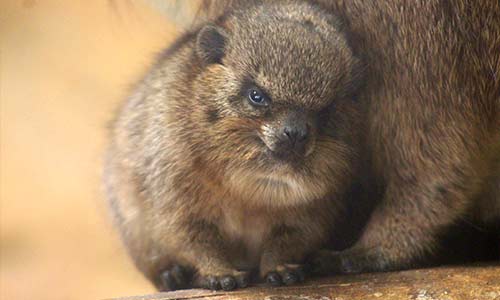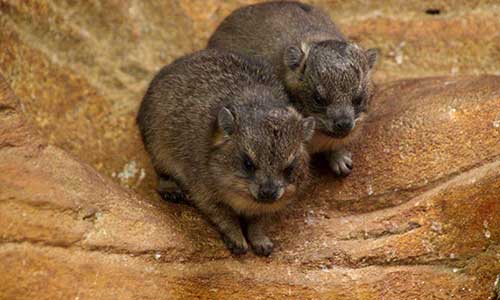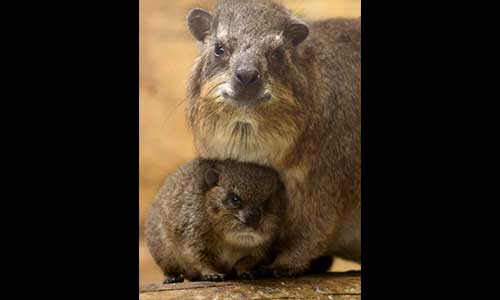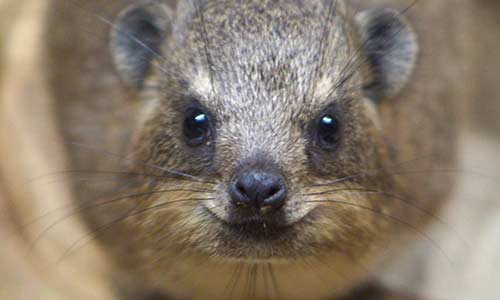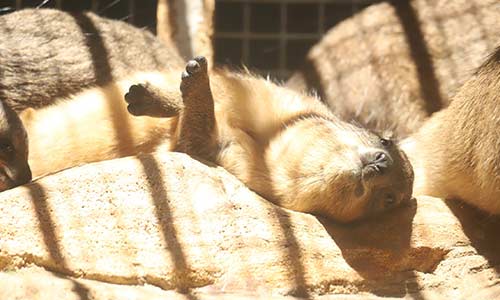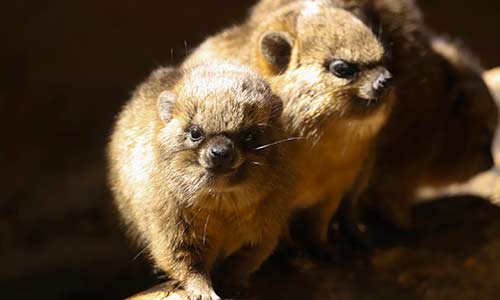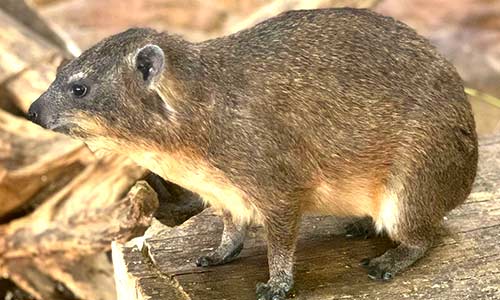Rock Hyrax
Procavia capensis
About the Rock Hyrax
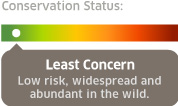
Class: Mammalia
Order: Hyracoidea
Family:Procaviidae
Genus: Procavia
Species:capensis
The rock hyrax may resemble a rodent, but it is actually distantly related to elephants and manatees! Like elephants, they even have tiny tusks (long, pointed tusk-like incisors). Unlike elephants, hyrax have feet built to climb on rocky areas. They're excellent climbers due to sweat glands and muscles on their feet that function like suction cups.
Rock Hyrax Facts
Appearance:
The rock hyrax may resemble a rodent, but it is actually distantly related to elephants and manatees. The upper teeth are triangular and overgrown--believed to be remnants of tusks. It has a squat build, a dense, light to dark brown coat, a cream-colored underbelly, short ears and legs, and a slightly pointed head. There is a small dorsal gland appearing as a patch of fur with a lighter coloration than the rest of the coat. This gland secretes an odorous substance that is used to communicate and mark territory. There are four toes on the front feet and three on the hind ones. They are excellent rock climbers due to sweat glands and muscles on their feet that function like suction cups.
Size:
Weight: 8 to 12 pounds (males slightly larger)
Height: 8 to 12 inches (at shoulder)
Length: 1 to 2 feet
Diet:
Rock hyraxes are herbivores. Their diet includes grasses, leaves, buds, stems and fruit; however, they have been known to feed on the eggs of lizards and birds. Hyraxes drink very little water.
Gestation:
Rock hyrax tends to give birth to two to four pups in the late spring/early summer after a gestation period of six to eight months. Pups are weaned at about 10 weeks and reach sexual maturity at 2 years.
Behavior:
Rock hyrax live in herds of up to 50 to 80 individuals. These herds are subdivided into smaller flocks consisting of families of three to 15 related females, a dominant male and several young. Dens are claimed in rocky crevices. They are diurnal and have somewhat ritual activities during the day. After emerging from their dens, considerable time is spent in sunning and grooming, followed by foraging and feeding, followed by a long rest period in shade and ending with a second period of feeding. The foraging distance is about 50 yards from the den. Hyraxes are timid, but can be aggressive and noisy, making a chittering sound. Sentries are used when out of the den, and they will issue a shrill cry to warn the others of danger.
Habitat/Range:
The habitat of a rock hyrax is rocky and scrub areas. They range throughout Sub-Saharan Africa, Israel, Lebanon, Jordan and Syria.
Median Life Expectancy:
5 years.
Threats:
Rock hyrax are a species of Least Concern. In some areas they are treated as pests.
You Can Find This Animal in the Windows to the Wild
Committed to Conservation
Zoo New England participates in the rock hyrax Species Survival Plan. By sharing research and knowledge, participating institutions work together to establish guidelines that best ensure the health of captive populations, and with success, the survival of endangered species.
You May Also Like
At Franklin Park Zoo:
At Stone Zoo:




